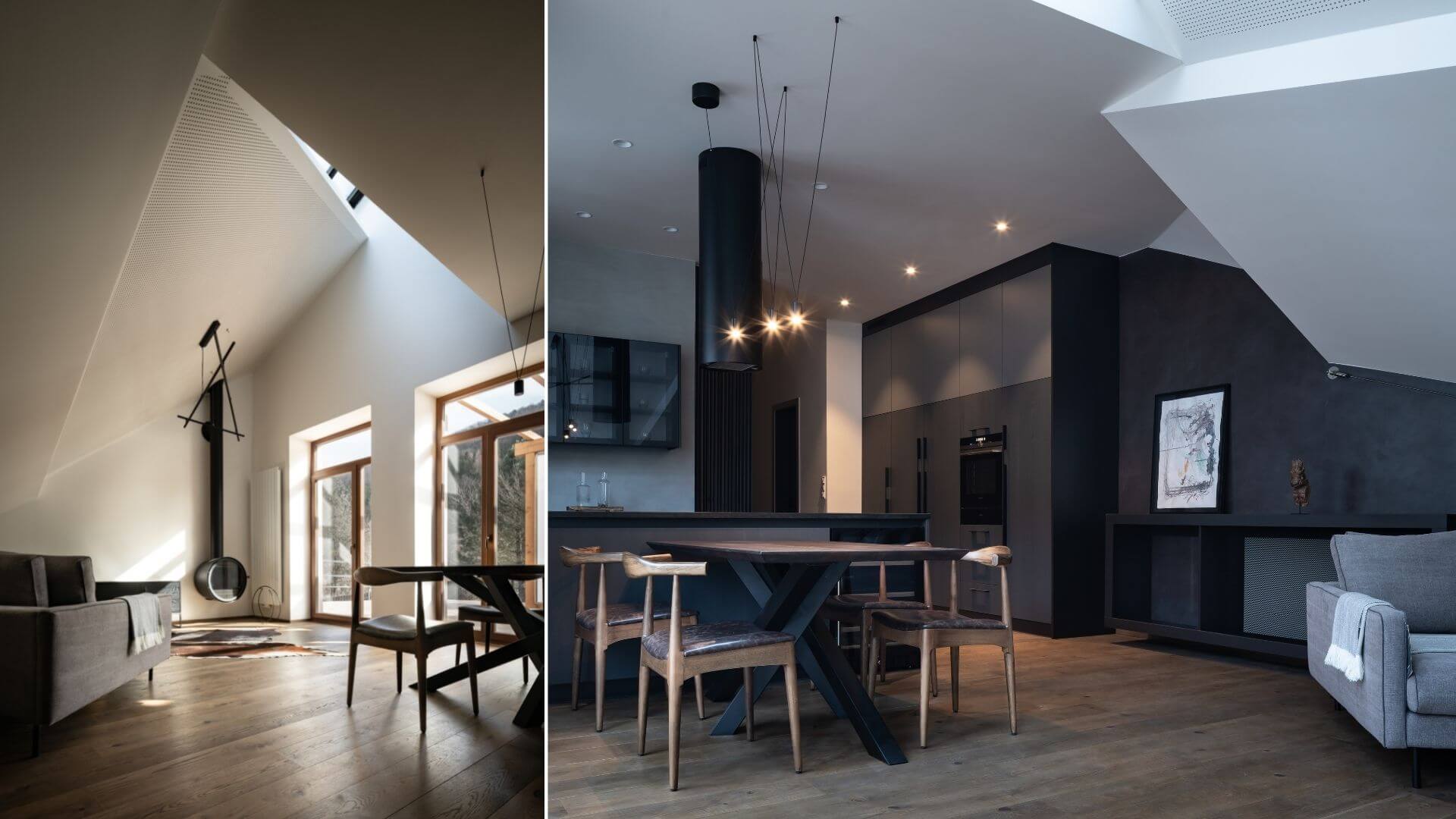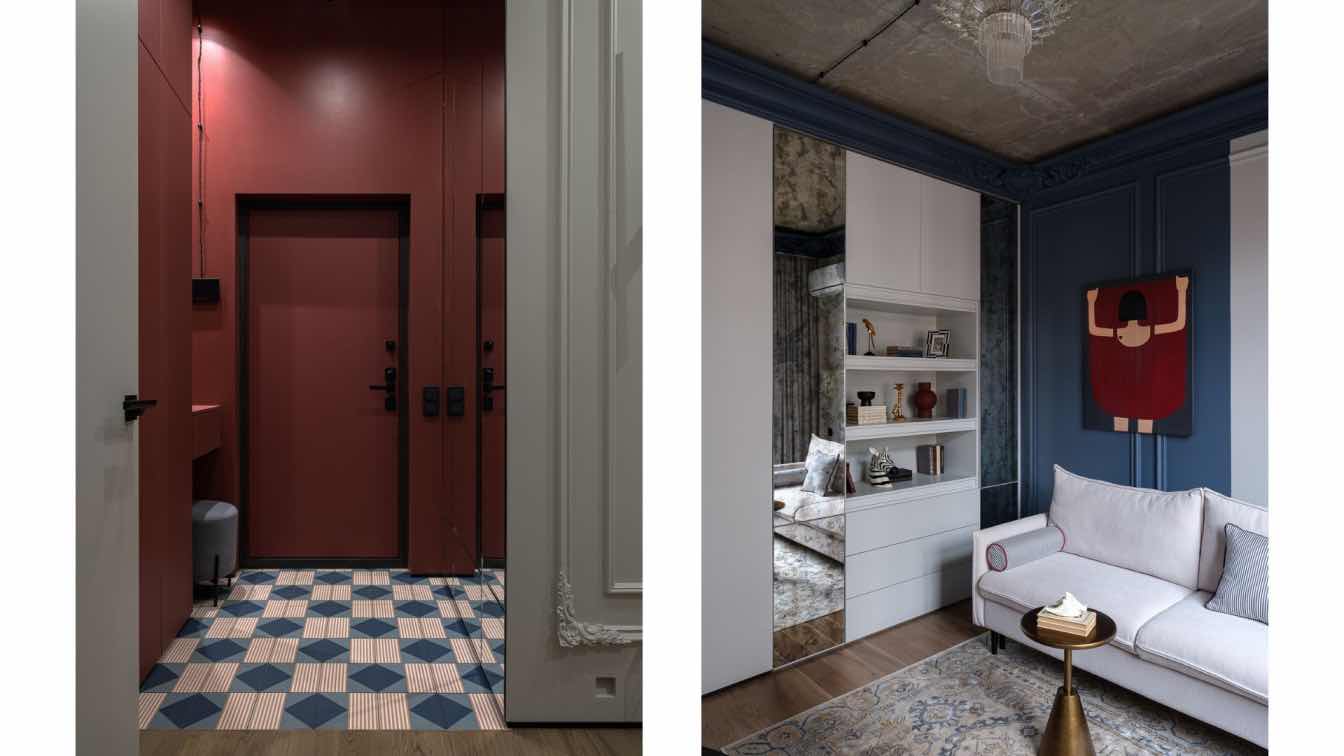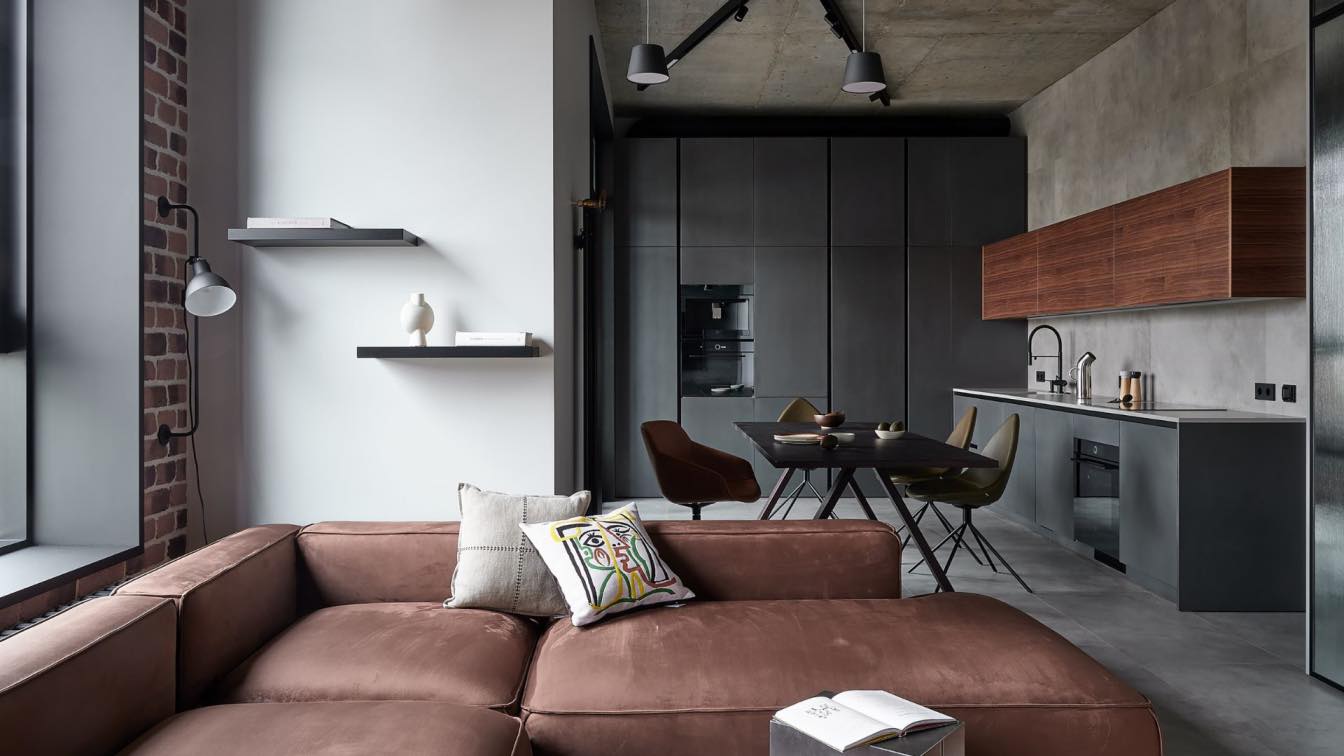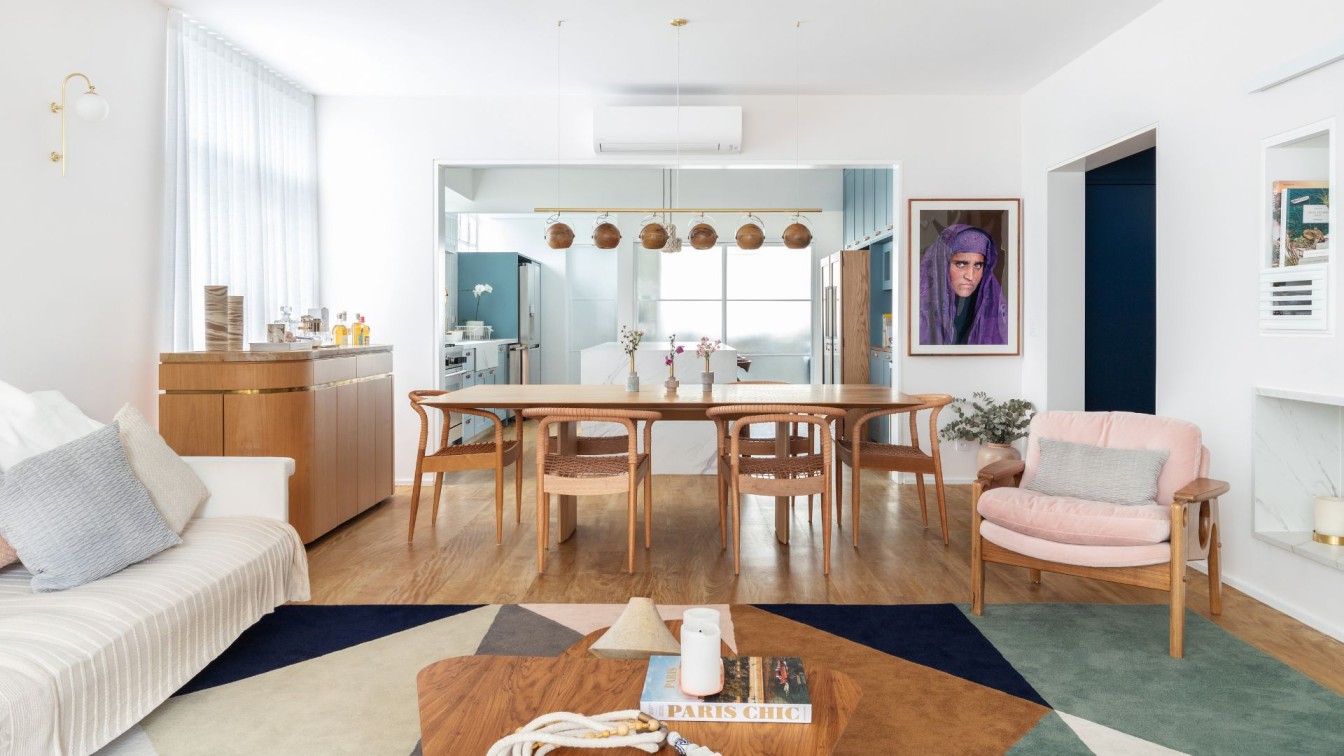Vaturi Design Studio: The Tel Aviv apartment is located in one of the most desirable projects in an upscale Tel Aviv neighborhood. The client, a divorced woman in her 60s, has rich hobbies and pursuits including professional race car driving, skippering, being a ranger, traveling, and trekking around the world. The apartment has an area of 110 sq.m. + balcony, in a 15-year-old building. The apartment the client purchased was in preserved condition and adhered to the original contractor's standard from about 15 years ago, so it was outdated and did not meet the client's needs.
The client's main requirement was storage, storage, and more storage. Moving from a private house to an apartment required precise planning and maximum utilization of space for practical needs and requirements, while allowing for a pleasant and complete space and proper movement in the different areas of the apartment. The client was born in Norway in a home that combined icons of famous designers, to a father who built boats/ships and a mother with exquisite taste. "All of these naturally pushed me to create a home that combines all her loves and hobbies, both in planning, materiality, form, textiles, and details," explains interior designer Dikla Vaturi, who is responsible for the project.
"As part of the need to maximize the apartment space and in order to create a natural flow of movement in the apartment and create the right views everywhere, I removed the wall separating the living room from the guest room, the wall separating the corridor (work area) from the bedroom. In their place, carpentry partitions were designed that combine double-sided cabinets that incorporated infrastructure and more. In addition, to create a separation between the work area and the kitchen but still allow natural light and views between the spaces, I created a slat partition that combines shelves on the kitchen side and lighting on the work area side". The slats in the partition correspond and recur in several other places in the apartment as part of the design concept.

Additionally, according to the positioning of the areas in the public space and in accordance with the main required and correct movement axis from the entrance to the apartment to the balcony window and the great demand for storage, the entire wall accompanying the entrant to the apartment, from the entrance to the balcony exit, is covered. The wall covering combines a hidden door to the guest room lobby and central bathroom, so that the dining area or any other area that would stand opposite the lobby would not be exposed to the bathroom door and would allow intimacy and on the other hand would also define the area clearly and pleasantly.
"Between the dining area and the kitchen, I created a separation with an elevated shelf unit, which allows hiding the work surface but still leaves the areas open to each other. In the separating unit and the shelf unit on the blast wall, I gave space to my initial inspiration, which is the client's collection of ARABIA FINLAND ceramics that caught my attention and served as part of the inspiration for the design concept".
When entering the apartment, there are two movement axes: one leading to the master bedroom passing through the work area, and the second, longer axis leading to the balcony. Through this axis, one passes through the public areas of the apartment: kitchen, dining area, and living- entertainment area. The long axis is accompanied on one side by a curved screen wall. In the kitchen, since the work area is limited, I incorporated advanced technology cooktops into the surface, which allow cooking on the surface and when not in use, can be used as a work surface.

The storage unit that separates the kitchen from the dining area not only serves to conceal the kitchen activities but also defines the dining area and provides additional storage for the special set of dishes with which the client also entertains. The dining area itself is the center of the public area, so it was important for me to emphasize it and differentiate it from the general color scheme of the apartment. Therefore, I emphasized it with the color of the table, chairs in black velvet fabric by Tom Dixon characterized by a feminine, slightly rough shape, and the lighting fixture designed and created especially for the project.
In the planning, opposite the dining area, there is a general bathroom adjacent to an additional bedroom for guests. This bathroom, which also serves as a guest toilet, was not changed and the touch was only cosmetic, replacing the carpentry ceiling (for A/C unit treatment), designing a sink cabinet and storage, and replacing sanitary fixtures. To conceal the entrance to the bathroom from the dining area, I created a hidden door that continues the wall covering in the public area of the apartment.
The living-entertainment area is the last public area before exiting to the balcony. The living room was designed so that it does not face a wall. One of the things that characterize the client's lifestyle is that she does not watch television, but music is a significant and important component in her daily life. Therefore, in the last part of the carpentry wall, I removed the built wall that separated the guest room from the living room in order to utilize every possible centimeter, also to allow maximum storage on both sides of the wall. In the guest room, there is a large wardrobe, and in the living room, there is a decorative carpentry covering combined with storage and wall speakers from O&B company, and the corner seating arrangement in the living room faces the windows through which one can view the urban landscape of Tel Aviv.

In the living room, I returned to the light color scheme and materiality that characterizes the entire apartment with a subtle correspondence to the dining area. The materiality and natural shapes with a rough touch, such as the side tables with a concrete finish in a sandy shade and finish, the bouclé fabric chosen for the curved armchairs that gives an initial and unprocessed feel, and the textile chosen for the rug is in the curved area of the apartment.
On the apartment's balcony, I gave touches of blue and green with an ethnic pattern that brings color from nature into the concrete urban landscape. In the work area, I created a slat partition that continues the design line of the apartment, but the partition has an additional value, it allows intimacy but also a view of the public area and the introduction of natural light into the corridor. I changed the entrance to the bedroom and created an entrance from within the wardrobe area. The wardrobe area creates a separation between the master bathroom and the sleeping area, so when entering the room, intimacy is still maintained and the entire room is not revealed.
I also covered the bathroom wall with carpentry including a hidden door, again to avoid having a door facing the bed and to create visual tranquility from every angle. On top of the precise carpentry that accompanies the entire house, I created a horizontal wooden belt at a height of 90 cm that accompanies the apartment in all its areas and incorporates carpentry handles in the cabinets for opening without disturbing the design tranquility.

The master bathroom was completely changed and expanded mainly due to the client's needs. The walls and floor of the room were covered with thin tiles in a travertine stone pattern. And CEA bronze finish mixers and faucets were incorporated.
"In the bedroom, there are two facades of curtain walls that reflect the urbanity outside and the natural light entry is abundant. It was important for me to 'clean' this area, give it tranquility, and therefore a separation was created between the wardrobe area and the sleeping area".
The apartment's lighting was designed in collaboration with a lighting designer, who gave emphases and solutions for various situations in the apartment, such as the dining area lighting which mainly comes from 4 fixtures that come out of the recessed channels that accompany the public area on both sides, marking lighting that allows movement at night without turning on all the lights in the house or any area, and the reading light solution in the bedroom, which continued the guideline of the apartment but did not steal the focus from the wall composition.
In addition, the apartment and rooms are accompanied by ceramic wall lighting fixtures designed especially for the project.





























